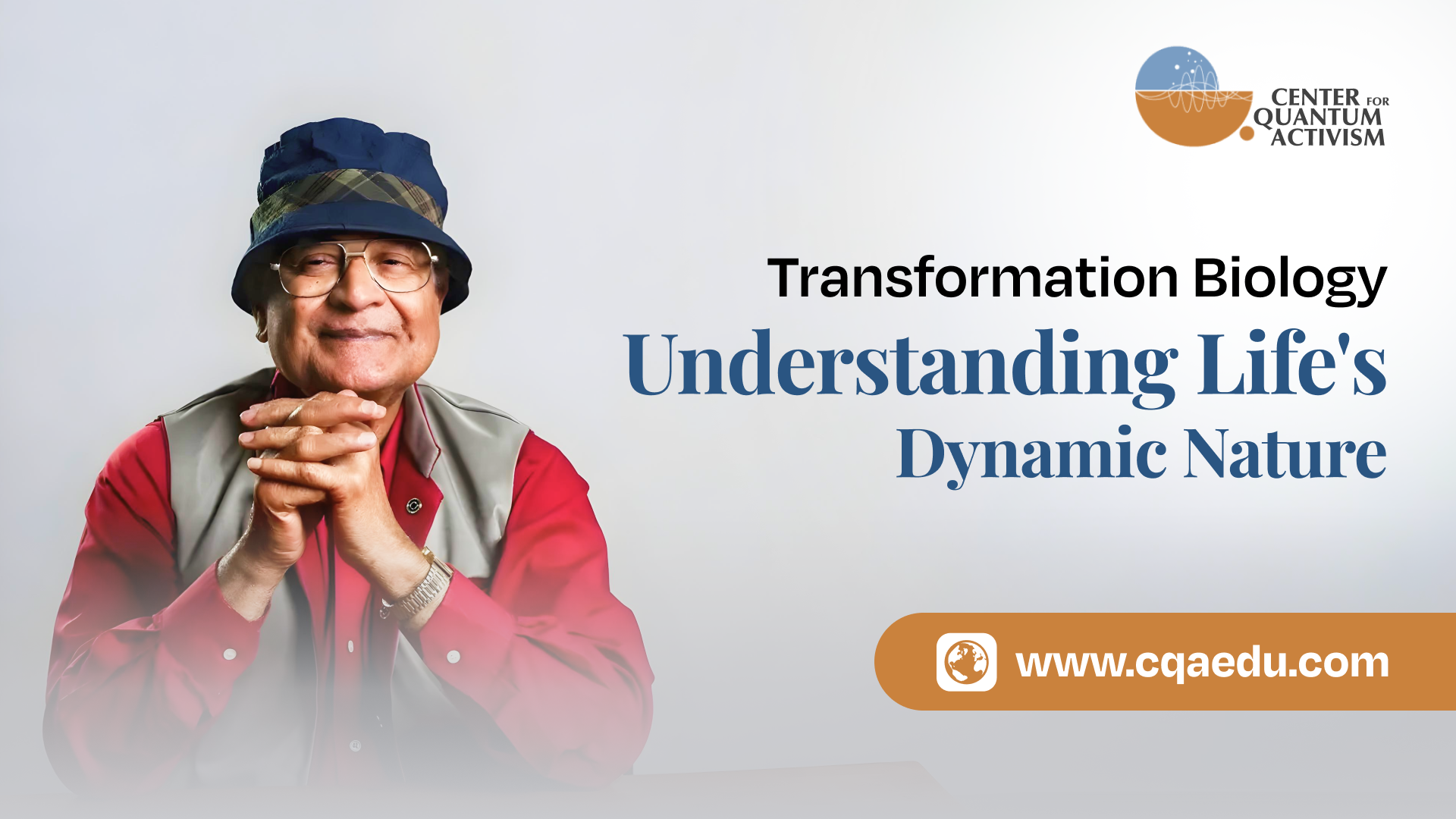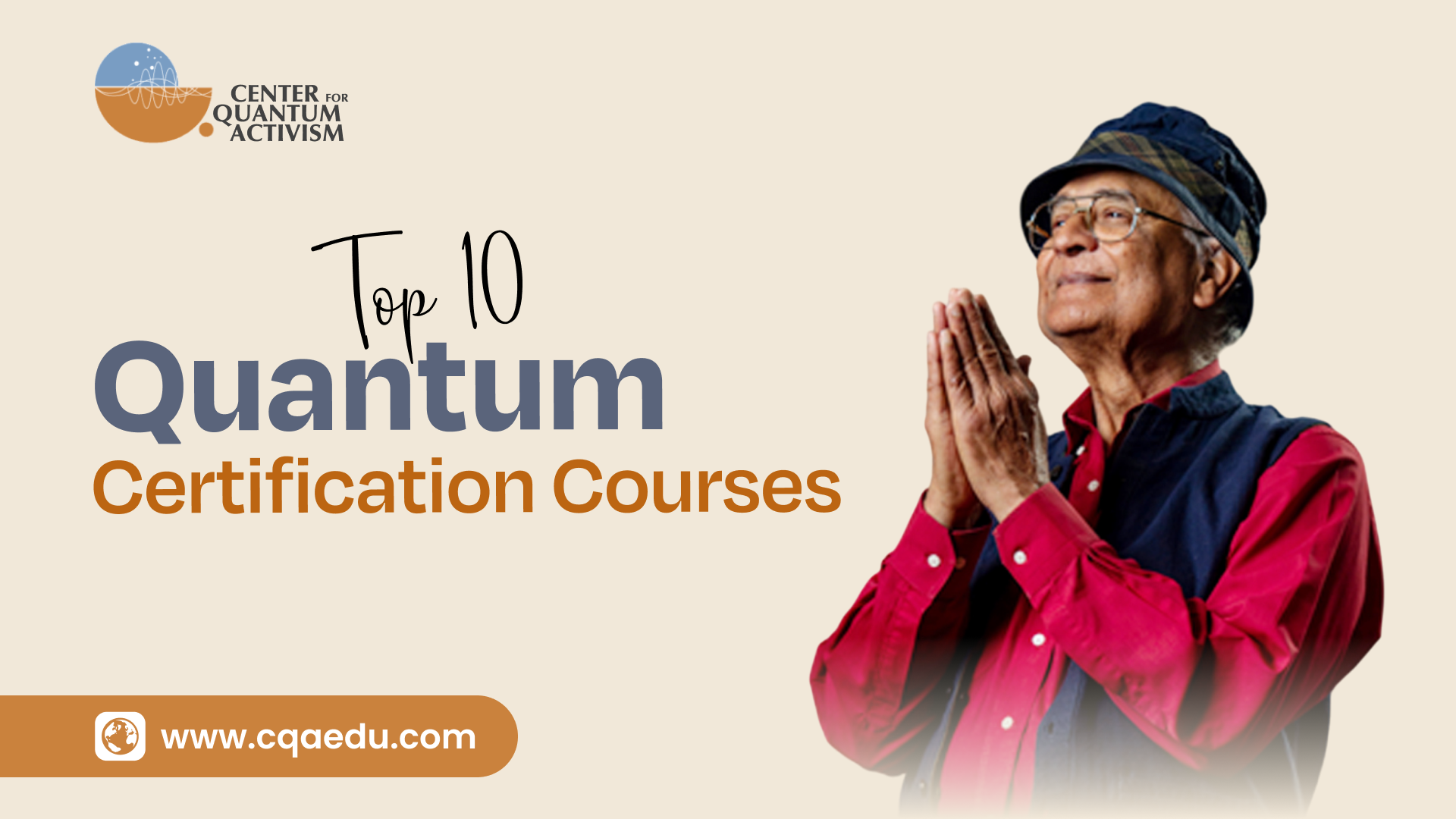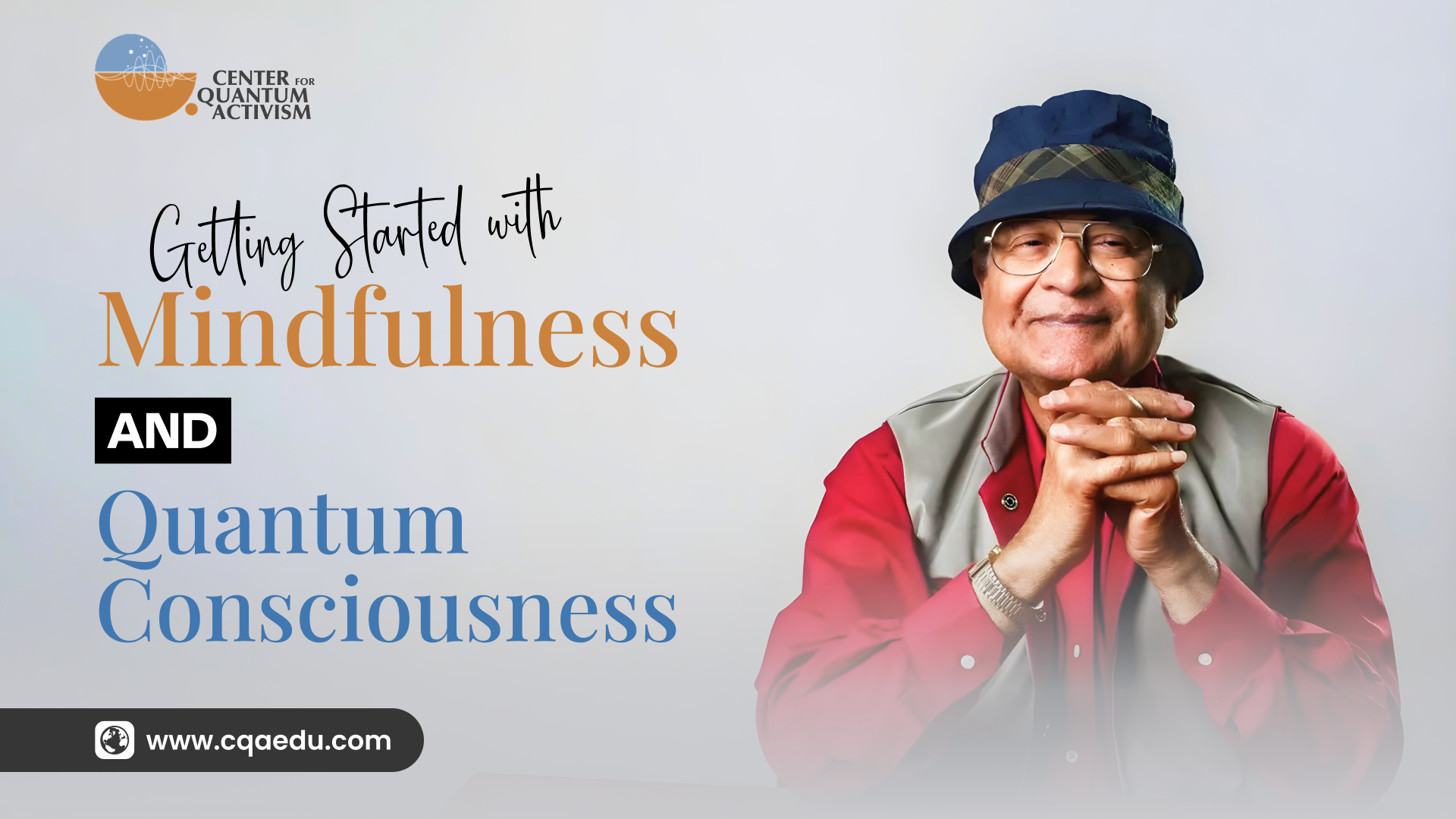Innovation drives everything that has to do with human development. Personal development has transcended the boundaries of old goals in personal development and professional development goals into a deeper concept called Quantum Personal Development. It combines quantum physics with self-growth techniques into a holistic framework, which not only changes the person’s ability but the very nature of the person as well.
Quantum personal development utilizes principles in quantum mechanics to study thought-pattern interactions, intent, and consciousness with the objective world. It is very different from the conventional approach that underscores outer actions and outward goal achievement but burrows into the very mysteries of one’s consciousness. This does indeed presume that what one observes, thinks, intends, and becomes aware of can shape reality in profound, unpredictable ways.
What Is Quantum Personal Development?
At its core, Quantum Personal Development is a system that integrates quantum theory principles with personal growth practices. Quantum theory suggests that particles can exist simultaneously in multiple states and influence one another regardless of distance. Applying this concept to self-development implies that individuals possess vast potential states and can shift their mindset, energy, and outcomes by exploring these different “quantum states” of self. Quantum Personal Development is about accessing and harnessing this latent potential, transforming one’s life through an elevated understanding of reality.
The Intersection of Science and Spirituality in Personal Growth
Most conventional self-improvement practices focus on more actionable strategies, such as setting personal development goals or working with a self-development coach. Effective though these are, they often miss the holistic essence that connects our inner and outer worlds. Quantum principles postulate that reality is not fixed and that the observer—in this case, the individual—has a role to play in shaping it. Quantum Personal Development wraps this profound concept into an extremely dynamic model of self-development goals that responds to both internal intent and external influences.
This quantum approach combines the spiritual aspects of personal growth with the hard science of quantum mechanics. As a result, it solicits a deep degree of reflection and awareness that opens uncharted pathways through typical personal development practices.
With the decades-long change, the field of Personal Development has transformed, but with the inclusion of quantum principles in this domain, it takes self-improvement to a whole new level, for Quantum Personal Development is rooted in the knowledge of both ancient wisdom and cutting-edge science, drawing one toward a perspective that is more than the self-help paradigms traditionally followed, promising a more profound, interconnected, and holistic journey towards inner growth.
Various prominent thinkers, scientists, and educators here attempt to advance the cause of Personal Development under the quantum light. Its guests include some trailblazers, like VALENTINA R. ONISOR, MD who bridged the gap between science and spirituality. As Director of Educational Programs at Center for Quantum Activism, USA, and Co-founder of Quantum Activism Vishwalayam, India, MD Valentina R. ONISOR has burst wide open the vistas of human growth as well as established an integrative paradigm for the study of consciousness at a quantum level.
The Quantum Paradigm and Personal Development
The Impact of quantum theories on Personal Development would therefore depend upon your understanding of the quantum realm. Quantum theory seeks to research phenomena at a subatomic scale. Quantum particles best describe ambiguity, wave-likeness, and interactivity. Quantum physics does even allow for more than one state to exist simultaneously, speaking of a fluid, connected web of possibilities rather than ordinary cause and effect.
This enables the Personal Development aspect to emerge-the individual is not a passive recipient of fate but a dynamic co-creator of experiences. The heightened awareness and intentionality of the individual would therefore in fact determine outcomes; one shifts from being reactive to creating consciously.
The Role of Consciousness
Classic psychology settles for considering the mind as the brain’s output: neurons are firing according to preconditioning and other patterns of habit. Quantum theory goes against this perspective, as consciousness is said to be an essential part of reality and not something the brain concocts. This is termed “quantum consciousness,” where consciousness and matter become intertwined. The theories propose that consciousness is quantal-that is, it affects particles, waves, and fields in ways we are only beginning to grasp.
As a Faculty of Quantum Science, UOT, India, VALENTINA R. ONISOR, MD speaks of consciousness being a versatile element in Quantum Personal Development. In any program or exercise that works with consciousness, we are operating and moving toward a higher level of self-empowerment. We do not perceive ourselves as separate from the outside forces but connected and interlinked at our core, thereby housing immense potential to grow and transform.
Quantum Practices for Personal Development
There are several quantum-based practices that, when incorporated into one’s Personal Development routine, can foster deep growth and transformation. Here are a few that stand out for their ability to bridge scientific principles with personal empowerment.
1. Quantum Visualization
Visualization is a well-known tool in Personal Development, yet quantum visualization takes this practice to another level. By consciously imagining desired outcomes with emotional depth and intention, we influence the quantum field in a way that encourages those outcomes to manifest. This technique taps into the principles of quantum entanglement and superposition, suggesting that our minds can “entangle” with the possibilities we envision, creating a resonance that attracts them to our experience.
Quantum visualization doesn’t only involve creating mental images; it engages all senses, making the visualization as immersive and tangible as possible. Practitioners focus not only on the end goal but also on the process, immersing themselves in each step, thereby reinforcing their alignment with their desired reality. This approach can be especially impactful when combined with breathwork and meditation.
2. Quantum Intention Setting
Intentions are powerful because they direct our consciousness toward specific outcomes. Quantum intention setting goes beyond simply setting goals; it involves cultivating a state of coherence between mind, body, and soul, allowing intentions to resonate at a quantum level. The process involves bringing one’s awareness into the present moment, centering oneself, and connecting with a sense of inner purpose. As VALENTINA R. ONISOR, MD teaches, quantum intention setting aligns our energy field with our desired outcomes, activating potentialities within the quantum field that correspond to our intentions.
3. Mind-Heart Coherence Techniques
Recent research has shown that the heart has its form of intelligence, emitting a powerful electromagnetic field that affects our mind and environment. By practicing mind-heart coherence, individuals can harmonize their thought processes with their emotional state, fostering a deep sense of inner unity. This practice is essential in Quantum Personal Development, as it stabilizes the energy field, making one’s intentions and visualizations more powerful and effective.
4. Quantum Meditation and Awareness
Meditation is a staple of Personal Development, yet quantum meditation introduces practices designed to reach altered states of consciousness, where practitioners can access the “quantum void”—a space of infinite possibilities. This state, also known as the “zero-point field,” is where one’s awareness is free from limitations, judgments, and ego-driven constraints, providing fertile ground for transformative insights and healing.
By entering into deep states of quantum meditation, practitioners can transcend ordinary thought patterns, dissolving blockages that hinder personal growth. As Director of Educational Programs, Center for Quantum Activism, USA, VALENTINA R. ONISOR, MD advocates for meditation as a means of accessing profound states of awareness, thereby unlocking hidden capacities for transformation.
Key Principles of Quantum Personal Development
To understand how to implement Quantum Personal Development, we must first explore the core principles that guide it:
1. Interconnectedness and Influence
In quantum mechanics, the concept of entanglement suggests that particles are interconnected regardless of distance. This implies that our thoughts, beliefs, and actions are not isolated events but parts of a larger interconnected web. By realizing this interconnectedness, individuals can see how their actions influence their lives and the lives of those around them.
2. Potential States of Self
Quantum theory states that particles can exist in multiple states at once. In terms of self-growth, this means that you are not confined to one version of yourself. Instead, there are multiple potential “selves” that you can step into — from the highly confident to the deeply empathetic. Quantum Personal Development encourages us to explore and embody these different states to maximize our potential.
3. Observer Effect
In quantum mechanics, the observer effect states that the very act of observing a phenomenon changes its outcome. Applying this to self-improvement suggests that by focusing our attention on certain personal qualities or personal development goals, we actively shape our experiences. This principle encourages mindfulness and deliberate focus on personal skills and strengths that support our personal growth.
4. Nonlinearity in Development
Traditional self-development approaches follow a linear path. However, Quantum Personal Development is nonlinear, acknowledging that growth happens in waves and cycles. Sometimes, progress may seem slow, but this nonlinear approach allows for exponential leaps in self-improvement.
How to Apply Quantum Personal Development
Step 1: Shifting Your Mindset to Recognize Potential States
Begin by identifying different states of being that resonate with your personal development goals. Each state represents a version of yourself with unique strengths and personal skills. Imagine a “confident self” that excels at public speaking, a “creative self” that thinks innovatively, or a “disciplined self” that sticks to routines. Recognize that all these states are within you, waiting to be activated.
Step 2: Setting Quantum-Inspired Self-Development Goals
While traditional self-development goals involve setting achievable steps, quantum goals embrace expansive thinking. Set goals that go beyond incremental improvement, such as transforming your approach to challenges or becoming a more influential personal development coach for others. Quantum goals reflect the broader, interconnected vision of who you are and who you aim to be.
Step 3: Focusing Intention as the Observer
With the observer effect in mind, approach each day with a focused intent. By observing your actions and thoughts with clarity, you begin to influence them. Pay attention to how this focus alters your personal development. This process, guided by self-reflection, enhances your self-growth and allows you to direct your energy purposefully.
Step 4: Embracing Nonlinear Growth Patterns
Quantum Personal Development recognizes that growth is not a straight line. There will be plateaus, setbacks, and sudden breakthroughs. By viewing these fluctuations as part of a natural rhythm, you allow yourself the freedom to expand without the pressure of constant forward movement.
Tools and Techniques for Quantum Personal Development
Meditation and Mindfulness
Mindfulness practices are foundational in accessing different quantum states of self. Meditation allows you to slow down and tune into the varied aspects of your personality, leading to improved personality development training. Consistent mindfulness helps you move fluidly between states, enhancing your ability to reach your self-development objectives.
Visualization of Potential Selves
Visualization is a powerful method to access potential versions of yourself. By vividly imagining yourself embodying different qualities, you reinforce these traits. This technique is particularly useful in meeting personal development goals, as you mentally practice becoming the best version of yourself.
Working with a Personal Development Coach
A personal development coach skilled in Quantum Personal Development can be instrumental in guiding you through these advanced concepts. They can help you clarify your goals, uncover hidden patterns, and develop a personalized path toward self-improvement. With the support of a personal growth coach, you gain the tools to tap into your latent potential and transform your life.
Benefits of Quantum Personal Development
Quantum Personal Development brings about an array of benefits, each stemming from the deep transformation that occurs when science meets self-development.
- Enhanced Self-Awareness: The focus on mindfulness and the observer effect sharpens your self-perception, making you more attuned to your strengths and areas for growth.
- Expanded Resilience: By understanding the nonlinear nature of growth, you develop a resilient mindset, seeing challenges as opportunities to explore different facets of your personality and personal skills.
- Increased Influence and Connectivity: Recognizing the interconnected nature of life, you build stronger relationships and a sense of purpose, knowing that your actions affect the larger system around you.
- Greater Flexibility in Self-Concept: The exploration of different states of expanding your self-concept, breaking down rigid ideas about “who you are” and opening doors to more fulfilling self-development journeys.








